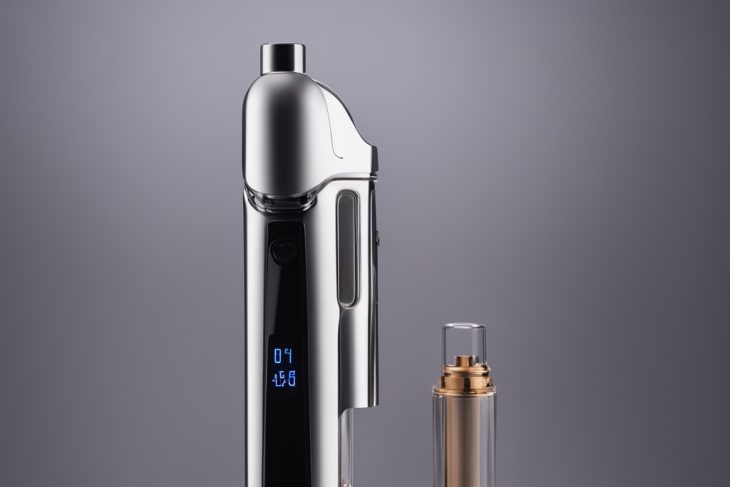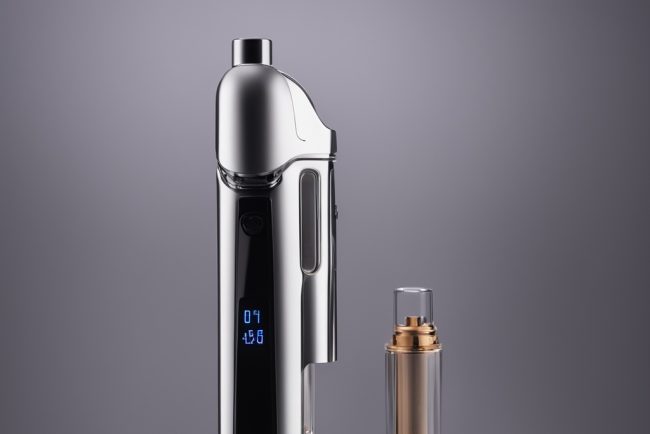
The Rise of Vape Stores: Understanding E-Cigarettes and Their Impact
Over the past decade, vape stores have become a common sight in cities and towns across the globe. These establishments cater to smokers looking for alternatives to traditional cigarettes, offering a wide range of e-cigarettes, vaping devices, and related accessories. But what exactly are e-cigarettes?
How do they work?
And why have vape stores gained so much popularity? This article delves into these questions and more, providing a comprehensive overview of the vaping industry.
What Are E-Cigarettes?
E-cigarettes, often referred to as vapes, are battery-powered devices designed to simulate the experience of smoking without burning tobacco. They typically consist of three main components: a battery, an atomizer (or heating element), and a cartridge or tank that holds e-liquid. When activated, the atomizer heats the e-liquid, turning it into vapor that is inhaled by the user.
The key difference between e-cigarettes and traditional cigarettes is that e-cigarettes do not produce tar or many of the harmful chemicals found in tobacco smoke. This has led many smokers to switch to vaping as a potential harm-reduction strategy. However, it’s important to note that e-cigarettes are not completely risk-free, and their long-term effects are still being studied.
The Evolution of Vape Stores
The first generation of e-cigarettes hit the market in the early 2000s, but it wasn’t until the mid-2010s that vaping gained significant popularity. This growth coincided with the rise of vape stores, which began popping up in shopping malls and urban areas. These stores not only sold vaping devices but also became community hubs for vapers to share tips, tricks, and product reviews.
Today, vape stores offer a wide variety of products, from disposable e-cigarettes to high-end customizable devices. This diversification has catered to both casual users and seasoned vapers, making the industry more accessible than ever before.
Types of E-Cigarettes
E-cigarettes come in various forms, each with its own advantages and disadvantages. Below is a list of the most common types:
- Cigalikes: These resemble traditional cigarettes and are often the first choice for new vapers. They are disposable or reusable and typically have pre-filled cartridges.
- Vape Pens: These devices are more compact than cigalikes and offer a wider range of customization options, including different e-liquid flavors and nicotine levels.
- Box Mods: These are larger, more powerful devices that allow users to adjust the wattage or voltage. They are popular among experienced vapers who enjoy cloud chasing (producing large vapor clouds).
- Disposable Vapes: These are single-use devices that have gained popularity in recent years due to their convenience and affordability.
Each type of e-cigarette has its own learning curve, which is why vape stores often provide guidance and support for new users. Whether you’re looking for a discreet option or something more powerful, there’s likely a device that suits your needs.
The Role of Vape Stores in the Community
Vape stores have become more than just retail outlets; they are community centers where vapers can connect and learn from one another. Many stores host events such as vaping competitions, product launches, and educational workshops. These gatherings help to foster a sense of belonging among vapers and provide a platform for sharing knowledge.
In addition to fostering community, vape stores play a crucial role in promoting harm reduction. By offering alternative products to traditional cigarettes, they contribute to reducing the number of smokers exposed to harmful chemicals. However, this role is not without controversy. Critics argue that vape stores may encourage smoking by making vaping more appealing, particularly to younger audiences.
Benefits and Risks of Vaping
Like any product, e-cigarettes have both benefits and risks. Understanding these can help users make informed decisions about whether vaping is right for them.
Benefits:
- Potential harm reduction: E-cigarettes do not produce tar or many of the harmful chemicals found in tobacco smoke, which may reduce health risks compared to smoking.
- Customization: Users can choose from a wide variety of e-liquids and devices to suit their preferences.
- Social acceptance: Vaping is often more socially acceptable than smoking, as it does not produce the same strong odor or secondhand smoke.
Risks:
- Nicotine dependence: Many e-liquids contain nicotine, which is highly addictive. This can make quitting vaping just as challenging as quitting smoking.
- Unknown long-term effects: The long-term health impacts of vaping are still being studied, and some studies have raised concerns about lung health risks.
- Attractiveness to youth: The availability of flavored e-liquids and sleek devices has led to increased vaping among young people, who may not realize the potential risks.
While vaping is generally considered less harmful than smoking, it’s important to approach it with caution. Consulting with healthcare professionals or visiting a vape store for expert advice can help users make informed decisions.
Challenges Facing the Vaping Industry
The vaping industry has faced several challenges in recent years, including regulatory scrutiny, health concerns, and bans on certain products. These issues have led to both positive and negative changes within the industry.
One of the biggest challenges is misinformation about vaping’s risks and benefits. While some studies have highlighted potential dangers, others suggest that vaping could be a useful tool for smoking cessation. Sorting through this information can be confusing for users and policymakers alike.
Another challenge is the inconsistent regulation of e-cigarettes across different regions. Some countries have banned flavored e-liquids or set strict limits on nicotine content, while others have embraced vaping as a harm-reduction strategy. This inconsistency can make it difficult for vape stores to operate smoothly and for users to access products legally.
Future of Vaping
The future of vaping is likely to be shaped by ongoing research, regulatory changes, and shifts in public opinion. As more studies are conducted on the long-term effects of vaping, we may see a clearer picture emerge about its risks and benefits.
One promising development is the potential for e-cigarettes to help smokers quit. Several studies have suggested that vaping can be an effective smoking cessation tool when used in conjunction with other methods like nicotine replacement therapy or counseling. However, more research is needed to confirm these findings and ensure that vapers are using products safely.
Another area of growth could be the development of safer, more innovative e-cigarette designs. As technology advances, we may see devices that deliver nicotine more effectively while minimizing potential health risks. This would not only benefit users but also help vape stores stay competitive and relevant in an ever-changing market.
Conclusion
Vape stores have played a significant role in the evolution of vaping, providing products, support, and community for millions of users worldwide. While the industry faces challenges such as misinformation and inconsistent regulation, it also offers potential benefits for harm reduction and smoking cessation.
Ultimately, whether vaping is right for you depends on your individual circumstances and goals. If you’re considering switching to vaping or have questions about the products available, visiting a vape store can provide valuable insights and guidance. Remember to approach vaping with caution, do your research, and consult with healthcare professionals if necessary.
As the industry continues to evolve, it’s clear that vape stores will remain an important part of the vaping ecosystem, offering support, education, and innovation for years to come.
The Role and Evolution of Vape Stores in the Modern World
In recent years, vape stores have emerged as more than just retail outlets; they’ve become community hubs and centers for innovation within the vaping industry. This article explores the evolution, challenges, and future potential of these establishments.
The Emergence of Vape Stores
The vaping phenomenon began to gain traction in the early 2000s but saw significant growth by the mid-2010s. With this rise came a proliferation of vape stores, which not only sold products but also fostered communities for vapers. These stores became essential gathering points where users could exchange tips and product reviews.
Types of E-Cigarettes
The vaping industry offers a variety of devices to cater to different user preferences:
1. Cigalikes: Resemble traditional cigarettes, often the first choice for newcomers.
2. Vape Pens: More compact with customization options.
3. Box Mods: Powerful devices popular among experienced users for cloud chasing.
4. Disposable Vapes: Convenient and affordable single-use options.
Each device has its own learning curve, making expert guidance from vape stores invaluable.
Community and Harm Reduction
Vape stores play a crucial role in promoting harm reduction by offering alternatives to traditional cigarettes. They host events like vaping competitions and educational workshops, fostering a sense of community. However, critics argue they may encourage smoking, especially among younger audiences.
Benefits and Risks of Vaping
Benefits:
– Potential harm reduction from avoiding tar and harmful chemicals.
– Customization with various e-liquids and devices.
– Social acceptance compared to traditional smoking.
Risks:
– Nicotine dependence due to addictive properties.
– Unknown long-term health effects, particularly on lung health.
– Attractiveness to youth through flavored options.
Challenges Facing the Industry
The industry faces challenges such as regulatory inconsistency, misinformation, and bans on certain products. The inconsistent regulation across regions complicates operations for vape stores and product accessibility.
Future Prospects
The future of vaping is likely influenced by ongoing research and regulatory changes. Promising developments include using e-cigarettes as a smoking cessation tool and innovative safer device designs. These advancements could benefit both users and store operators.
Conclusion
Vape stores have significantly contributed to the evolution of vaping, offering products, support, and community. While challenges exist, they also present potential benefits for harm reduction. Whether vaping is right for an individual depends on their circumstances and goals. Visiting a vape store can provide valuable insights and guidance, highlighting the importance of these establishments in the industry’s ecosystem.
As technology advances and research continues, vape stores will remain pivotal in shaping the future of vaping, offering education and innovation for years to come.























